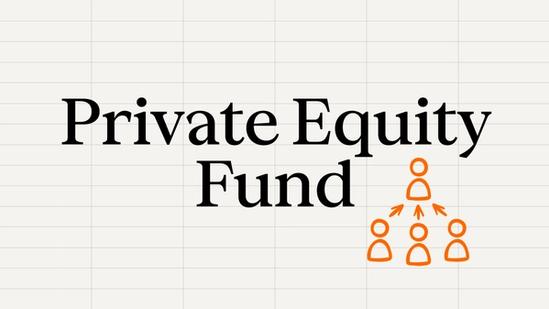Should 60/40 Portfolios Make Room for Alternative Investments?


Should investors be modernizing their tried and tested diversified portfolio splits?
- Following a turbulent few years, the logic of the traditional 60/40 portfolio is being called into question yet again.
For the last 50 years, the starting point for most investment portfolios has been a pretty simple rule of thumb: 60% equities, and 40% bonds (or thereabouts). But with a tough few years for the model and the fact that many institutional investors have long been diversifying their portfolios with alternative asset classes, the prevailing logic of the traditional equity/bond blend is being questioned , with alternatives looking increasingly attractive to investors wanting to shake things up.
The 60/40 (and other traditional models) today
The logic of the 60% equities/40% bonds model is that the volatility of equities means they tend to over-perform in the good times, while the relative stability of bonds offer protection when markets are down, striking a balance between growth and stability. The two asset classes have an inversely correlated relationship meaning when one goes down the other goes up. The most common allocation is 60/40, but the mix can vary depending on several factors, from risk appetite to the age of the investors.
From the 1970s until around 2022, it was an approach that served investors reasonably well. According to Schroders, an investment of $1,000 in 1989 and measured through to 2019 would have an annual return of 7.5%, outperforming pure stock or bond portfolios. Between 2011 and 2021, that ramped up to an 11.1% annual return.

Source: Schroders
However, a truly terrible 2022 saw inflation dent bonds’ return potential right as the stock market went into decline – a correlated dip that had only ever happened twice before, in 1931 and 1969. There’s been a recovery since then but its has been slow, leading many economists, investment banks, and financial outlets to declare that the 60/40 model is dead. Or dying. Or rising again. Take your pick, really.
In the last 12 months, Goldman Sachs claimed it was a good approach just a year after claiming “we think investors have many reasons to be concerned that the 60/40 might be dead”; Schroders, via the FT Adviser, have suggested it’s time to reassess; JPMorgan declared it “far from dead”, while Vanguard – the investment group that first made the 60/40 its primary index investment strategy in the 1970s – said the model is set to start delivering returns close to its historical average once again.
The truth, as with everything in investing, is complicated. It’s one of personal or institutional preference and ambition. It’s dead when an investor decides it’s no longer the right model for them. It’s making a comeback if they decide “Oh wait, actually, it is”.
Despite this, with the long-term benefits of 60/40 up for debate, many investors are looking to alternative asset classes to help diversify their portfolios away from pure stocks and bonds.
What is an alternative asset class?
An alternative asset class, often shortened to alternatives, is an investment outside of traditional categories like stocks, bonds, and cash such as private equity, real estate, hedge funds, and commodities.
Private equity, for instance, involves investing directly in private companies, providing the opportunity for substantial returns, albeit with higher risk and longer investment horizons. Hedge funds employ a variety of strategies to generate returns, often aiming for absolute returns, regardless of market conditions while real estate can offer steady income through rents and potential appreciation over time. Commodities, such as gold, oil, and agricultural products, can serve as a hedge against inflation and market volatility.
Alternatives’ place in a remodeled portfolio
Institutional investors today typically allocate anywhere from 5-30% of their portfolios to private assets as the returns, depending on the exact strategy, can offer lower correlation to public markets, helping reduce overall portfolio volatility. In fact, some of the best private equity vintages have been those coinciding with economic slowdowns and recessions. Exposure to private companies offers diversification benefits that can complement and stabilize a portfolio, especially when the typical 60/40 allocation becomes less efficient in higher interest and inflationary environments, as has been the case for the last few years.
However, even during periods of lower interest and inflation, alternatives have historically provided strong returns and reduced volatility. The optimal allocation for each individual depends on your risk tolerance, liquidity needs, investment horizon, and existing portfolio composition. However, the chart below shows that adding a diversified portion of alternatives – such as private equity, real estate, and hedge funds – to traditional stock and bond portfolios can help both manage risk and improve returns.
Retail and individual investors and alternative asset classes
It’s easier than ever for individual investors to purchase alternatives, but following in the footsteps of institutional investors is particularly high risk. It should be approached with caution and, where possible, under the guidance of an experienced fund manager. While private equity and private investments can offer substantial rewards, they also come with unique risks and challenges. If you closed your eyes and picked any private equity fund at random, you could be better or worse off by at least 17% in a given year. They demand a deep understanding of the market, the ability to perform extensive due diligence, and a readiness to commit capital for the long term. Fees are generally higher, and the investment process is more complex compared to traditional assets.
Just as with institutional investors, the optimal allocation of alternative assets for each individual depends on your own circumstances. For private wealth investors, a common strategy is to start with a smaller allocation, say 5-10%, and increase it over time. In general, you should tie your allocation to two questions: what are you trying to achieve with your investments, and what allocation will help you meet those objectives?
While equities and bonds portfolios seem cursed to remain perpetually both dead and reborn, for the foreseeable future they remain a sensible starting point for investors. The model was designed to stay resilient and, over the long term, it’s done exactly that. However, in a new world with more available routes towards resilience and returns, investors should consider alternatives to truly bring their portfolios to life.
ThinQ by EQT: A publication where private markets meet open minds. Join the conversation – [email protected]




